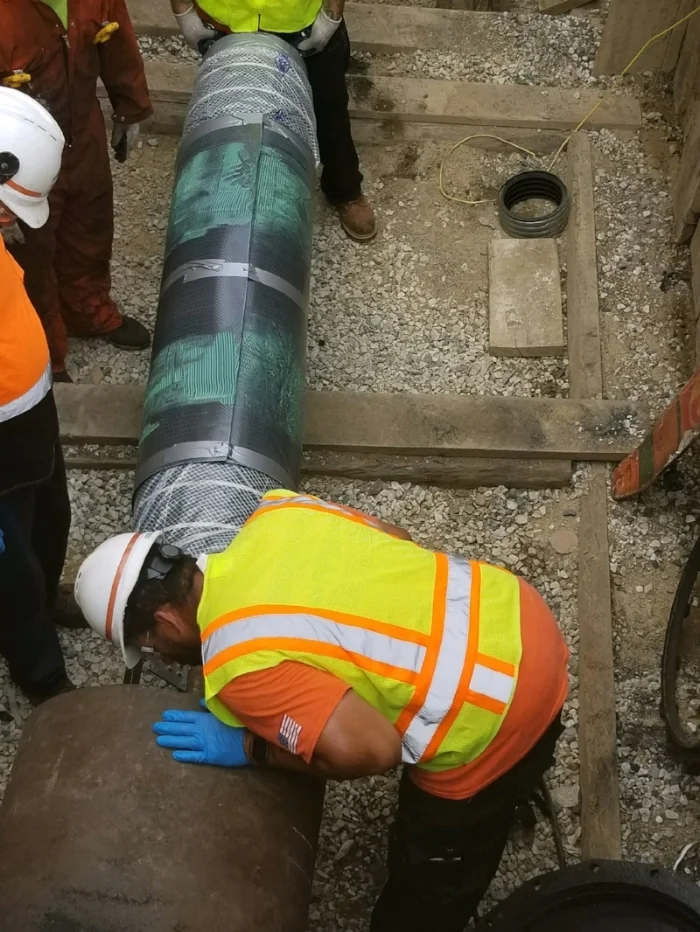Innovative Technology
Carbon Fiber Reinforcement Sleeving
Carbon Fiber Structural Reinforcement Sleeves (SRS) forms a sleeve to strengthen the pipeline where there are gaps or corrosion.
One of PPM’s most innovative trenchless techniques is the use of using Carbon Fiber Structural Reinforcement Sleeves (SRS) to secure the integrity of damaged pipelines. High strength carbon fiber material in the form of a “sleeve” is inserted robotically into the pipeline. Carbon fiber is light, with high-tensile strength, high temperature tolerance, and low thermal expansion, properties which make carbon fiber ideal in diverse applications, from aerospace and engineering, to motorsports and sailing.
PPM’s robotic devices and method of installing carbon fiber sleeves, have been part of our ongoing effort to improve the efficiency of CIPL. The proprietary process was developed in 2011 and is used effectively to reinforce bridge abutments, reinforce corroded high-pressure gas mains, and to span gaps in pipelines (for example, where drip pot standpipes must be removed). PPM can design, develop and test custom robotics to install carbon fiber sleeves in pipelines safely and effectively. Robotics with extendable reach features can cut away the existing drip standpipes, allowing the carbon fiber sleeve to create a “bridge” across the drip cavity. The carbon fiber bridge allows for seamless lining without incurring costs for unnecessary and costly excavations.








